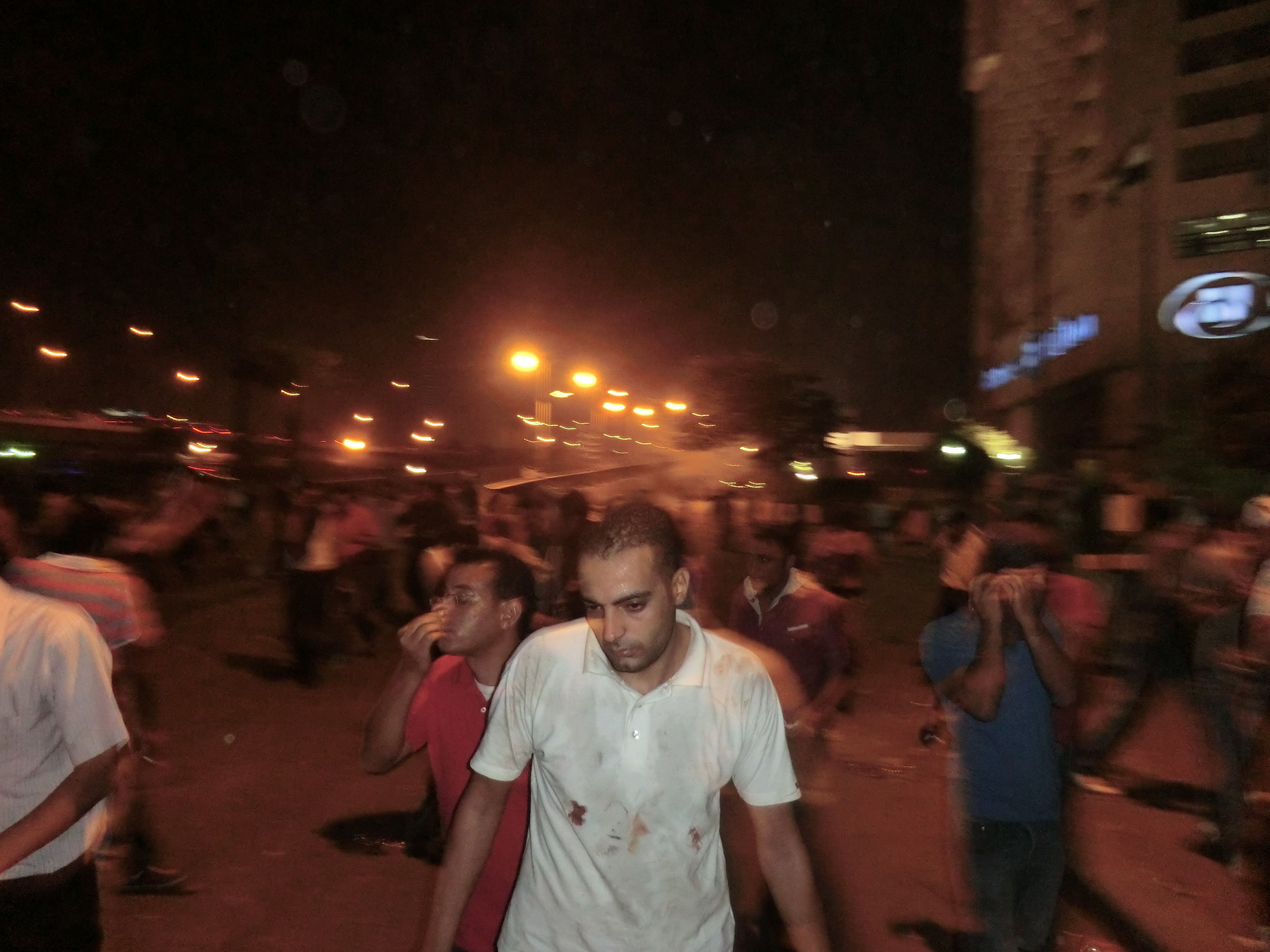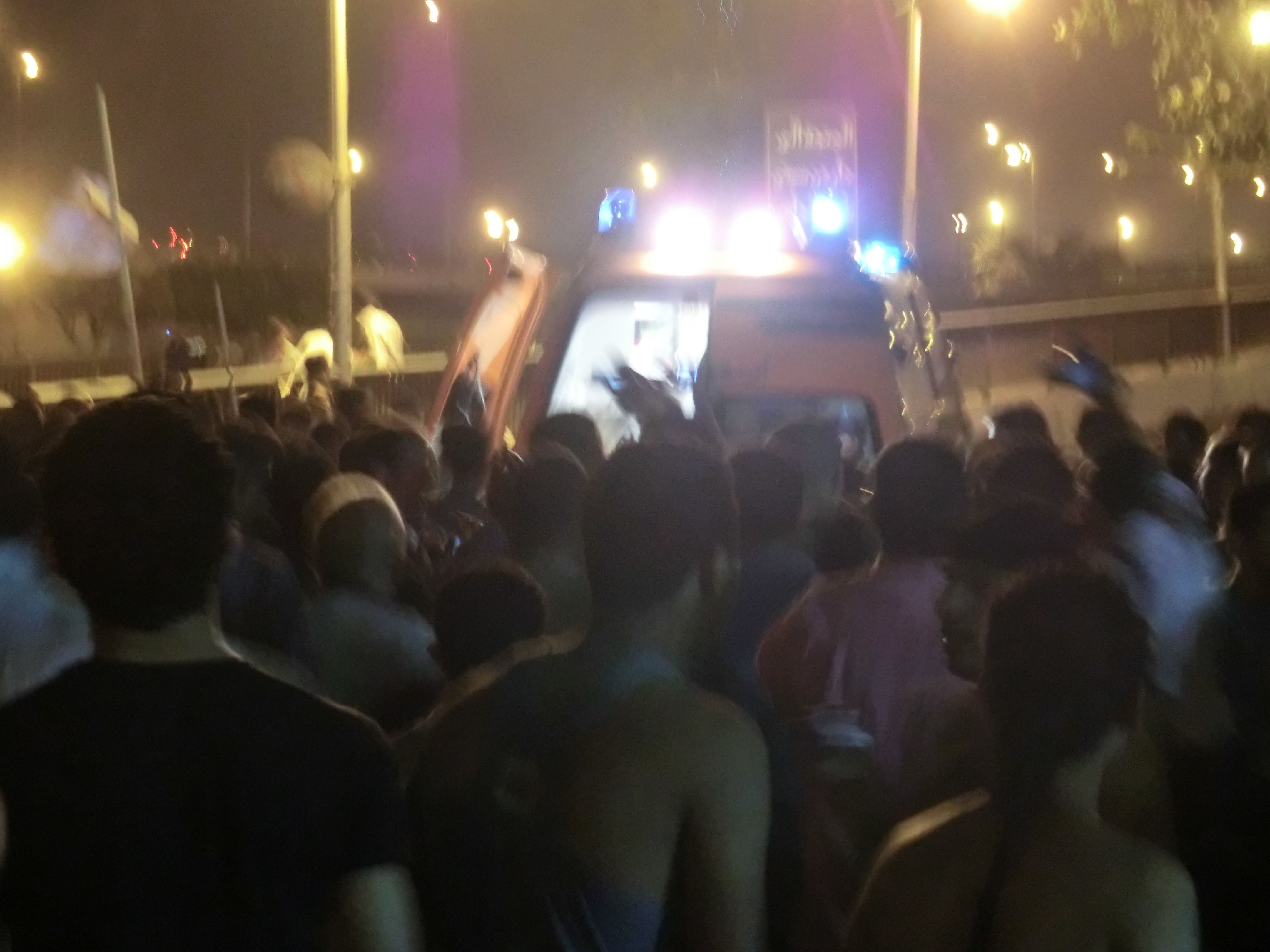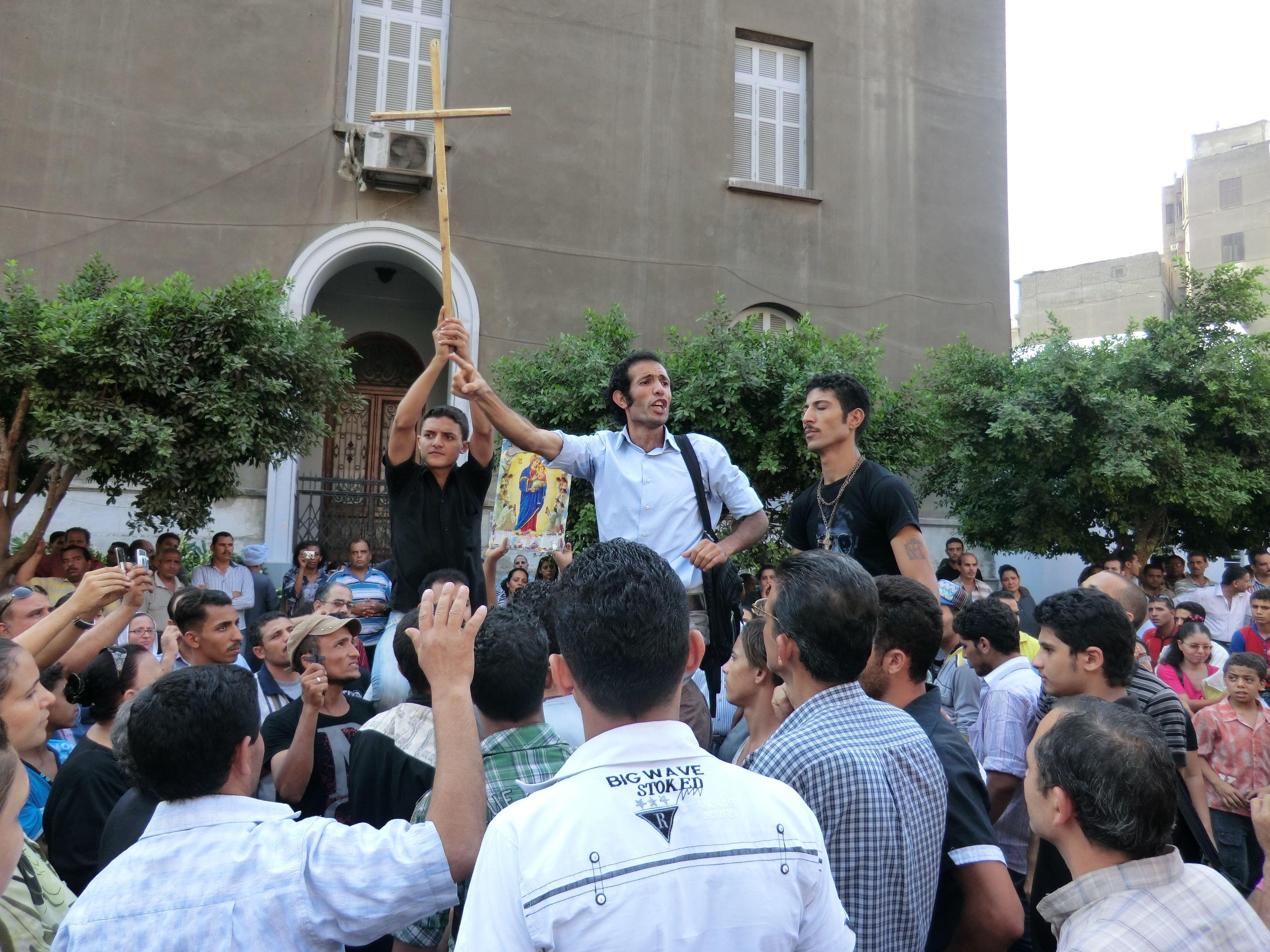On October 9th, the army attacked a demonstration of thousands of Coptic Christians and their supporters gathered in front of the State TV and Radio headquarters — known locally as "Maspero" — in downtown Cairo. Soldiers and military police fired live ammunition and drove armored personnel carriers at high speeds into the crowd. At least 26 people were killed and more than 300 wounded. The incident was the bloodiest act of repression by the Egyptian army since it took the reins of power on February 11. The scene at the Coptic hospital the following afternoon was harrowing. Families and friends of the victims crowded into an open-air courtyard at the hospital morgue to mourn the dead. The coffins remained empty as families and lawyers worked to get autopsies that would officially record the cause of death.



















